Leslie Morgan: Abstract dialogues and personal symbolism
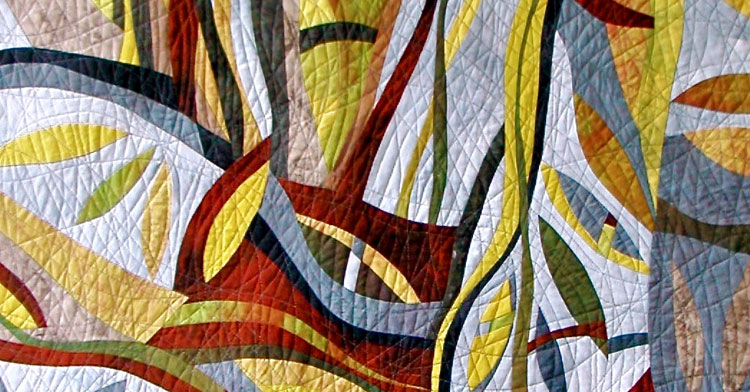
Californian-born artist Leslie Morgan is an embroiderer who makes quilts. She combines numerous techniques including screen printing, painting, mono printing and other surface design techniques to build up meaning, texture, atmosphere and mood in her work.
In our interview with Leslie we talk about her role as a ‘storyteller’, why it’s important to take risks and she tells us about yearly retreat to binge on work.
‘Idle hands’
TextileArtist.org: What or who were your early influences and how has your life/upbringing influenced your work?
Leslie Morgan: I am American, born in California. My earliest memories of my mother and grandmother were of them making. My mother made clothes and my grandmother tatted. My paternal grandmother painted, and my colouring-in-books were hand-drawn by her.
At the age of 10 my mother died, and shortly afterward we moved to Northern Rhodesia for my father to work on a mission station. My sister and I went to a boarding school, run by missionaries for missionary children. The ‘idle hands’ principle was event as the boys learned to woodwork and book bind and the girls learned to knit for the local orphanage, and then also smock, crochet, embroider, and dress-make! I guess gender roles were pretty strong then! Yes, I am that old!
What was your route to becoming an artist? (Formal training or another pathway?)
After boarding school I finished my education by correspondence, and also ran the under five clinic at the mission hospital. I delivered my first baby at 15. My source for clothes was missionary barrels of donated old clothes so, continuing my dressmaking was out of necessity and doing so, started the creative process, of making something from almost nothing. Strangely I never joined the present “up-cycling” trend although I did make dungarees for my four children from their auntie’s twill trousers.
I formally trained as a nurse and midwife, in South Africa, and carried on my dressmaking, knitting, and embroidery. I was particularly productive on night duty. I can remember crocheting a sunhat out of supermarket carrier bags… and still no up-cycling!
Getting more adventurous
What initially captured your imagination about textile art?
My history of making clothes, bags, coats and then baby clothes, dolls, toys, etc, lead to me eventually getting more adventurous, so I did a course on machine stitched appliqué. I thought this would be good for clothes but found myself going the wall hanging route. The first class was a design of a little boy fishing… very cutesy! I made two for my young son and also my nephew. The second project was a landscape, and I did not like the design so drew my own! I also made two, and sold one to an orthopedic surgeon for his office. They say a hobby is no longer a hobby when you start selling!
The teacher said don’t come for the last class, come and plan how we can work together! And so we did, so I saw the potential of being able to stay at home with the children, and work piecemeal. I was self taught, and from then on totally driven. I devoured all the books I could get my hands, adding techniques like dyeing and machine embroidery to my skills. I started teaching classes as I learned.
I had more choice and chance to add to my skills when we moved to the UK. When the children were small I taught classes, and then once they were older I did my City and Guilds in Patchwork and Quilting and then my Diploma in Stitched Textiles. I achieved a distinction licentiate with the Society of Designer Craftsmen and am an honorary member.
What is your chosen medium and what are your techniques?
To develop personal cloth I use Procion MX Dye. I like immersion dyeing for plain cloth and also Shibori, and tray dyeing, for pattern, variegation and texture. I screen print, paint, mono print and other surface design techniques to make two types of cloth. I make a palette of cloth or collection of mostly cotton fabrics, to use to assemble into constructed pieces. When I make these, I am looking for fabrics that will relate to each other in concept, mood and message… harmonies and contrast.
I also make whole cloth compositions to stitch. Some of these are quilts, and some are soft stitched hangings, not unlike irregular smocking.
How would you describe your work and where do you think it fits within the sphere of contemporary art?
I describe myself as an embroiderer who makes Quilts. I am a storyteller, and my pieces relate to life experiences. My dialogues are abstract in nature but full of personal symbolism. Music and lyrics influence my work continuously. Does anyone ever fit in?
I do my work for me, sometimes it has grown from the exercises I have been writing for the books or classes, but I enjoy the luxury of making exactly what I want to. No “challenges” or imposed themes! If my work is seen to fit into the contemporary art scene, so much the better, but I make it for me. If it sells, it sells, and I have been fortunate to sell many. The unlikely pieces, always goes go first!
‘Filling the well!’
Tell us a bit about your process and what environment you like to work in?
I have two studios. My construction is done in a small space with two design walls, cutting table, iron and sewing machine table. I work best with a clean and uncluttered area, with inspiration, and fabric around me.
I have a wonderful serene garden studio which has a large window that puts me ‘in the garden’ to work and I have watched the sunrise and cast its dawn light onto my Print Bench many mornings!
I also set aside time in my year to have a retreat to binge on my work. I like this time to be uninterrupted, by work or distractions and also in the company of like-minded friends and colleagues. I have an annual retreat with Claudia Helmer in Germany, which is a wonderful way to start our year! We teach together in a wonderful studio four times in Speyer Germany but our start to the year is about our own personal work ‘Filling the well!’
My present work is made within a series, with a two different outcomes. Pieced… traditionally in technique or whole cloth, but I am telling the same story in both results. This gives me momentum, and I often have 6-8 pieces on the go, some at the fabric development stage, as this can take a long time, and I usually have several prepared and waiting to be stitched.
Do you use a sketchbook?
Yes, I do. I use printing, drawing, and collage to make books as a creative activity, to feed my curiosity but not to directly work direct from. My camera is my curiosity tool. I love to explore compositions and document what I see daily.
What currently inspires you and which other artists do you admire and why?
I am inspired by artists who have shown me how to search and research. They have shown me how to be an artist and educator, not necessarily how to make. Nancy Crow was one of my most import influences in how to approach textiles as a passion and career. Dorothy Caldwell showed me how to relate my creativity play (the books) to my work. I admire Grayson Perry for his open honesty. Most recently, I studied with Alice Fox and admire her for her determination to explore her world intimately through her observation, collecting, writing and photographic compositions.
Singer songwriters who have influenced my work are Annie Lennox, Dido, and much earlier Runrig, and Paul Simon.
New Life – Lost light and Keeping Balance
Tell us about a piece of work you have fond memories of and why?
My favourite piece is usually the one on the top of the pile, which I want to see done. I do however have a few favourites from my older pieces. These two seem to relate to each other.
New Life Rising was in an early series, and it seemed to make it self! No struggle… all flow! The piece that preceded it, was all about struggle. I like its moodiness. Keeping Balance was an experiment that just happened. It came out of playing with a palette of cloth, which I had developed, for another series. Its working title was ‘If you are up a ladder… boogie!’ It was a fun, happy piece to make, which emerged out of taking a risk, and letting it develop.
How has your work developed since you began and how do you see it evolving in the future?
My early work had to be all about the technique, as I was learning. The primary inspiration was colour, and how to use it. This is a continuing passion and curiosity and my 5-day Colour class, Part 1 and Part 2 are the best workshops I teach, in my opinion, of course! I always consider my work to be about colour, even through the six or seven years when I worked mostly in black and grey.
Experience is hard to quantify. I resisted adding more techniques unless I had a job for them to do, and so I focused on learning how to use the techniques expressively.
When I am feeling stale and need to play… I add to my vocabulary of marks by taking one tool and explore how many marks I can make with it. I use it well, and I use it badly, and I let playfulness lead me to new discoveries. I think of the cloth as a big giant sketchbook!
What advice would you give to an aspiring textile artist?
Rush in where angels fear to tread… but when the horse dies, get off it!
Fake ‘til you make it.
Work Anyway (Nancy Crow).
Trust yourself.
Share willingly all your secrets.
Can you recommend 3 or 4 books for textile artists?
Books about art and life…
Julia Cameron – The Artists Way
Steal Like an Artist – Austin Kleon
The Creative Habit – Twyla Tharp
Trust the Process – Shaun McNiff
What piece of equipment or tool could you not live without?
I paint with a ‘dead’ credit card! I am definitely a cheap date!
Do you give talks or run workshops or classes? If so where can readers find information about these?
In the UK – www.committedtocloth.uk
In Germany – www.textilstudio-speyer.de
In Italy –www.masseriadellazingara.com
How do you go about choosing where to show your work?
White walls, space to hang my rather large pieces and being amongst friends.
Where can readers see your work this year?
August 7-10 2014
www.thefestivalofquilts.co.uk
Linda Seward’s book launch Gallery at the Festival of Quilts
Autumn 2014 in 3 venues with Zero 3
www.zero3textileartists.com
At the Knit and Stitch Show
www.theknittingandstitchingshow.com
November 2015 at the Menier’s Gallery in London with ViewSeven
www.susiekoren.wordpress.com
For more information please visit: www.committedtocloth.uk
If you’ve enjoyed this interview with Leslie let us know by leaving a comment below.

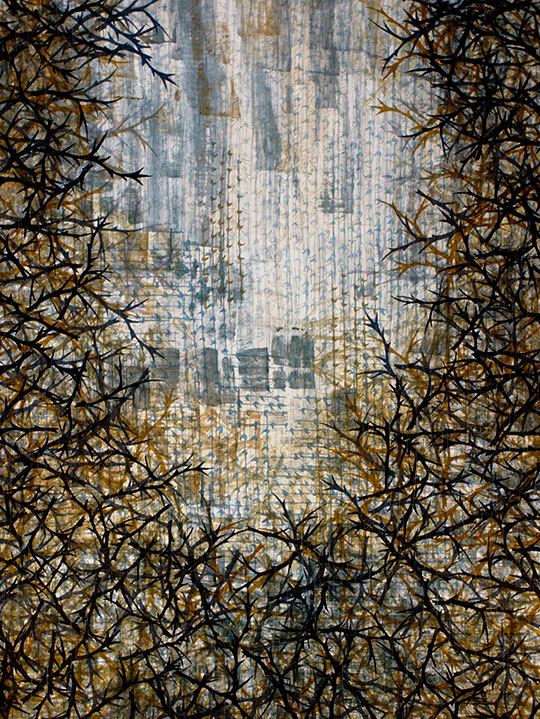
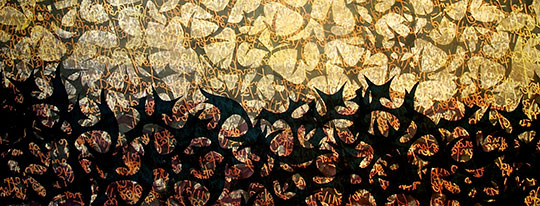
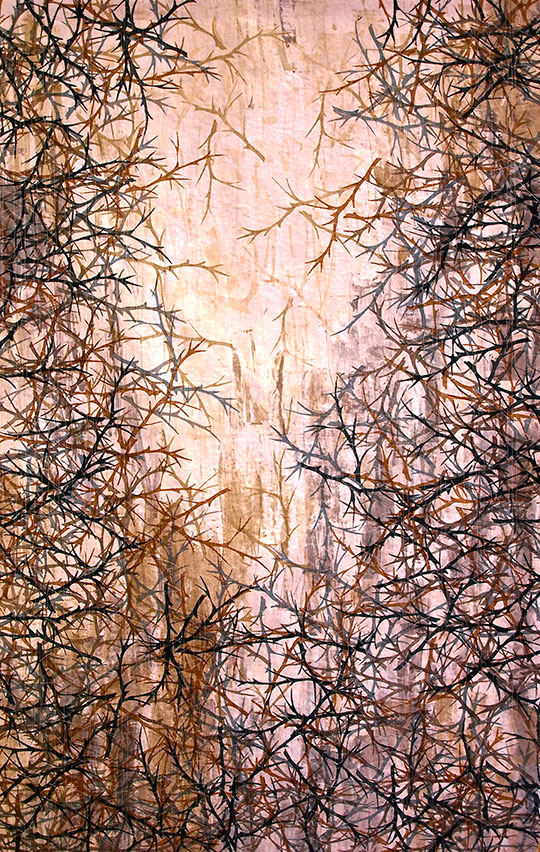
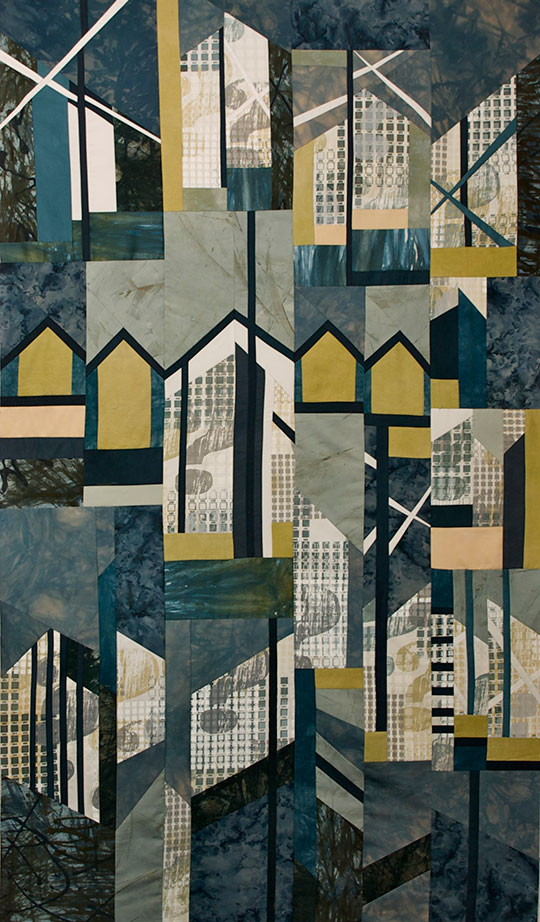
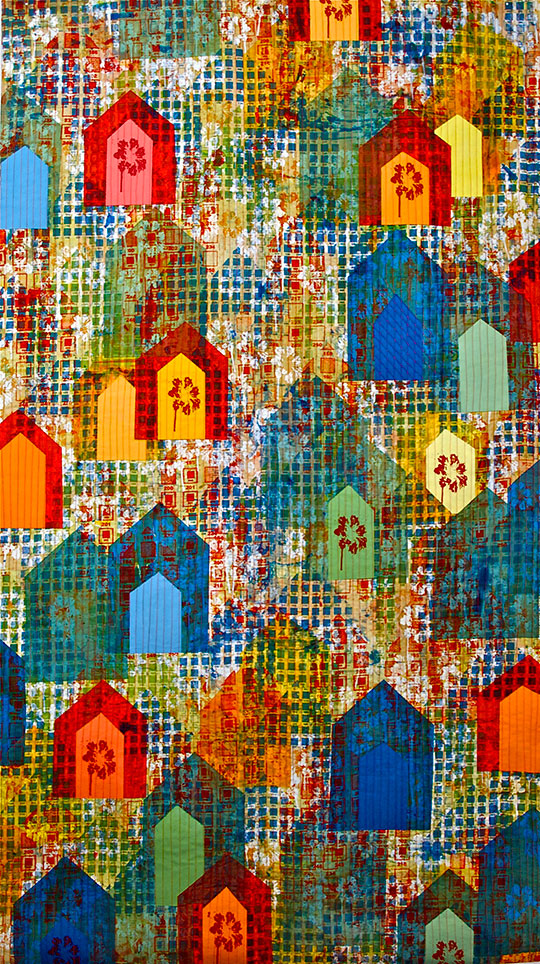
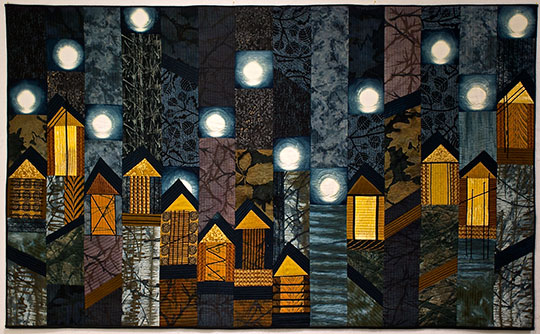
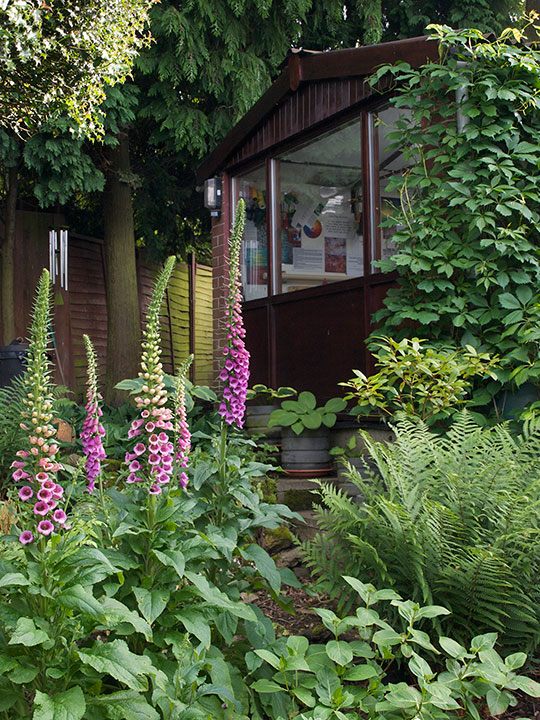
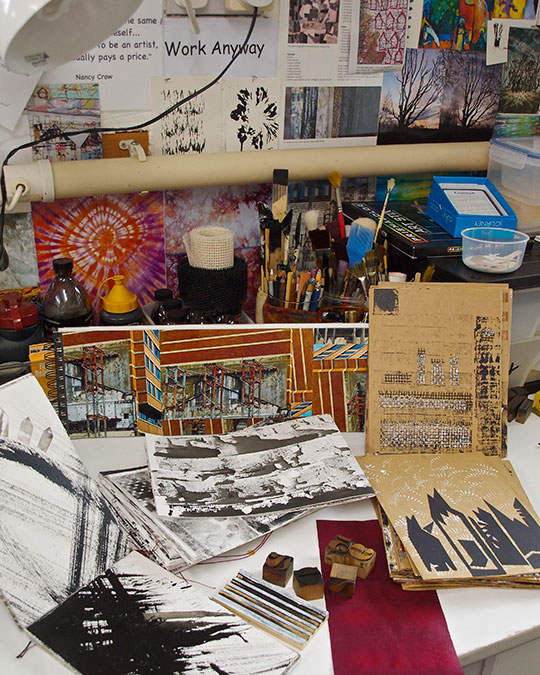
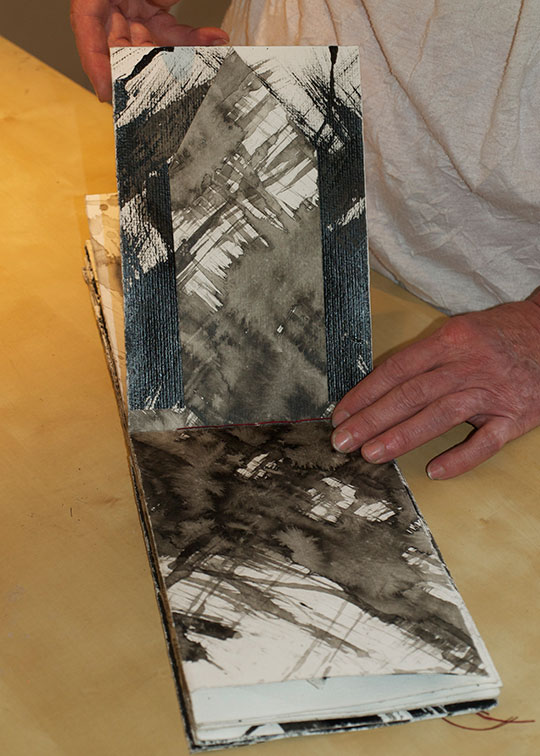
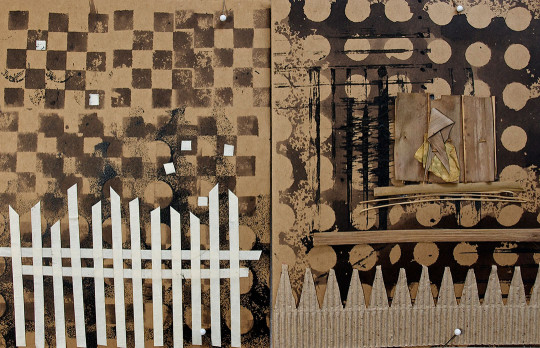
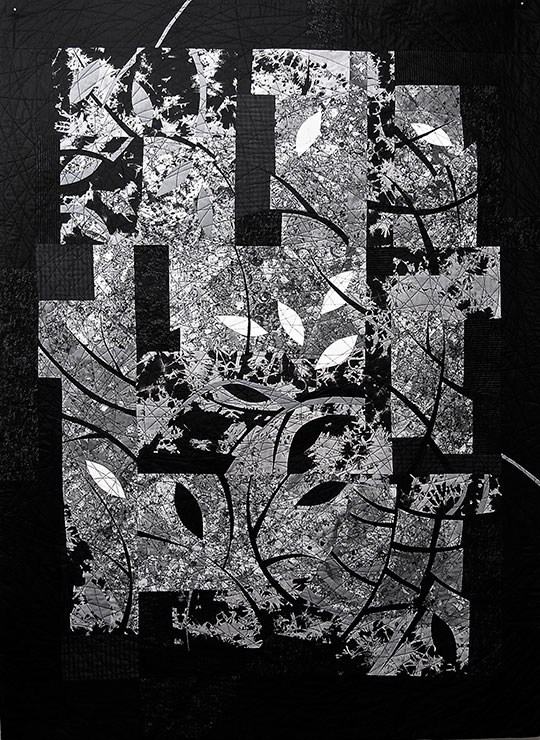
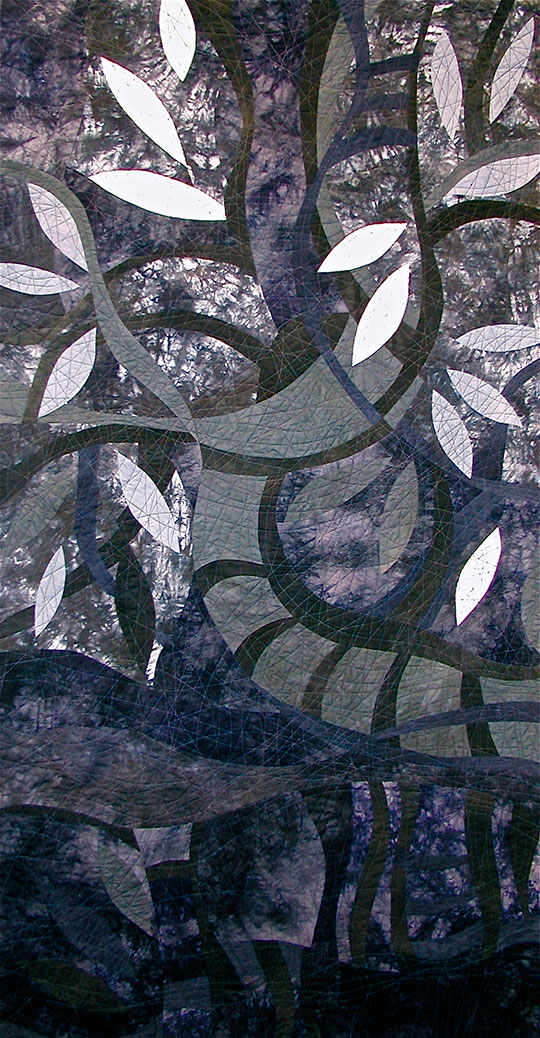
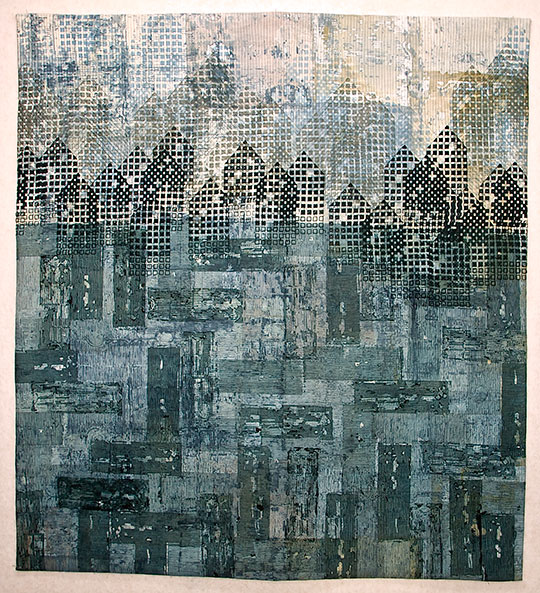
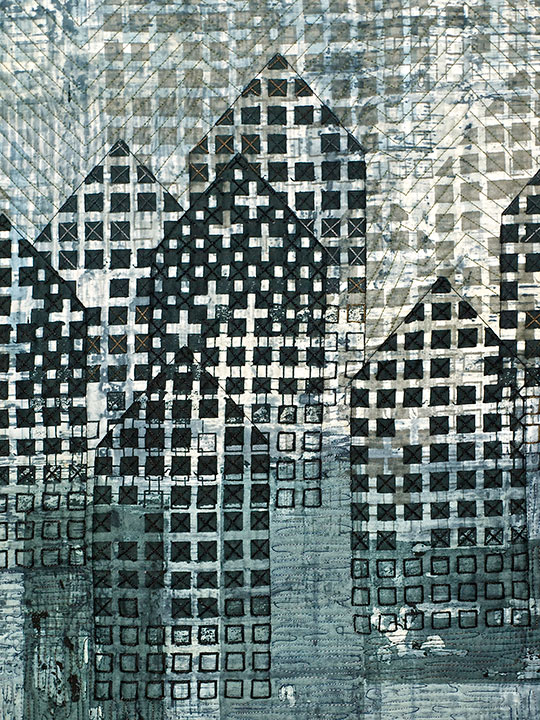
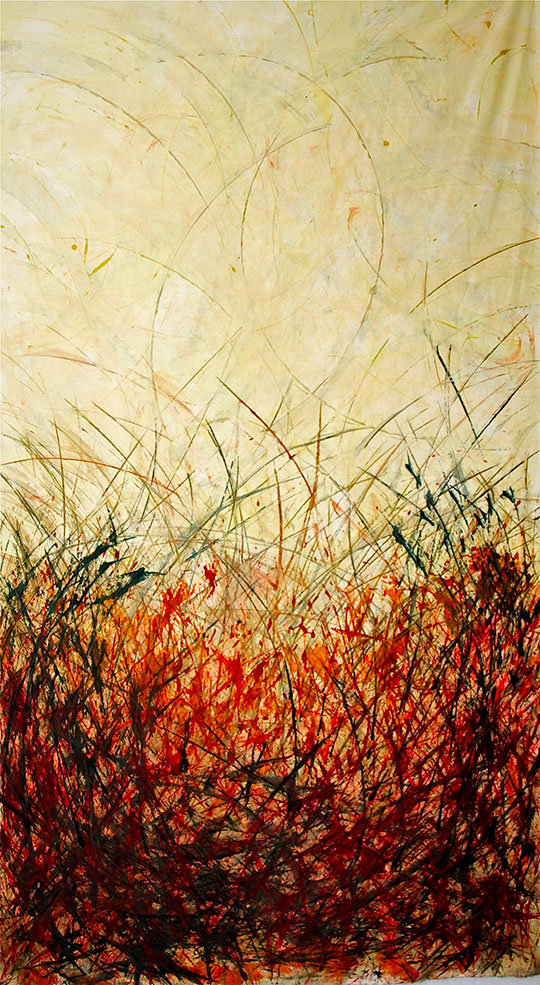
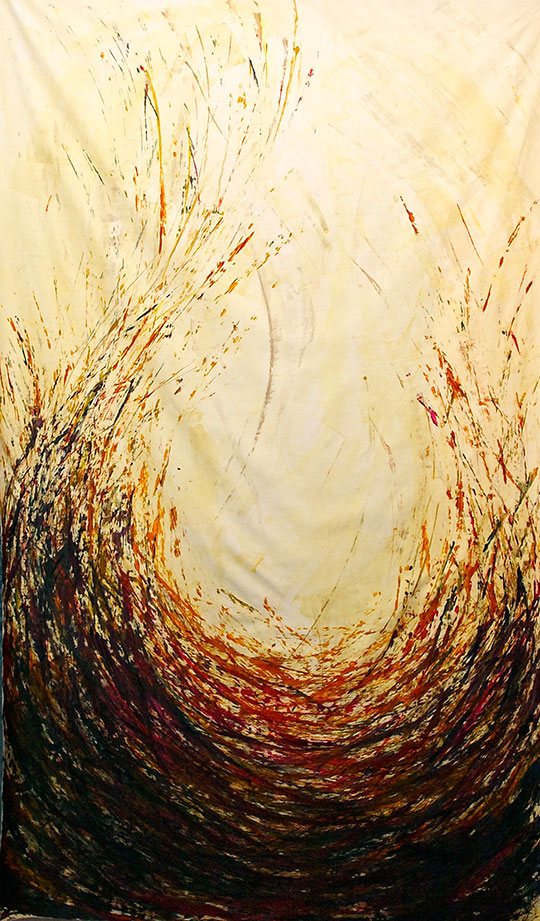















Thank you for introducing us to Leslie Morgan. A fantastic artist.
I am the proud owner of ‘New Life-fragments of survival’. It hangs opposite my bed and I have never got tired of looking at it, finding new things in it all the time and admiring the subtle composition. As well as being an artist who continues to learn and grow in her own practice, Leslie is also a fantastic teacher( and a wonderful person). I must say it was a wonderful surprise to find this article and see my quilt.